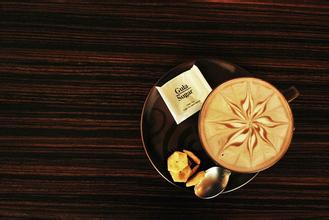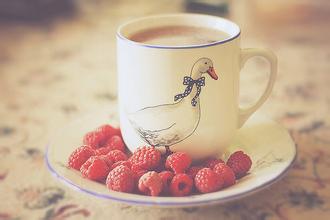The whole process of coffee from picking to finished product-the whole process from picking to finished coffee
The whole process of coffee from picking to finished product-the whole process from picking to finished coffee
Sun-Dried or Natural full sun exposure
As the name implies, sun-drying means that coffee fruits are completely dried by the sun.
A good way of tanning should include:
❶ wind selects winnowing to remove light impurities, such as branches, leaves, grass, etc.
❷ screened sifting to remove impurities that are heavier or larger than coffee fruit, such as stones, soil clods, etc.
❸ flotation flotation further removes impurities and overripe and even dried coffee fruits according to specific gravity.
On the left, there is a yellowing transparent pectin on the outside, and the S-shaped yellow in the middle is the silver skin wrapped with raw beans from the inside to the outside, and the parchment paper shell between the silver skin and the pectin. The skin and flesh on the right side are one, and the flesh of individual varieties of coffee fruit will be a little thicker. The ripe coffee fruit is sweet to bite off, with a bit of spicy taste of green pepper and spice.
According to whether the peel is removed or not, the treatment of coffee fruit can be divided into two ways: dry (Dry Processing) and wet (Wet Processing). Then, according to the different treatment of pectin, it can be divided into finer honey treatment, semi-washing and so on.
Coffee trees can be divided into two main varieties: Arabica (Arabica) and Robusta (Robusta).
There are also some minor species, such as the Liberian species (Liberica) and the Alabasta species (Arabusta), but they are rare on the market.
Although Arabica and Roberta are widely cultivated, there are significant differences between them. Beans are different and tree species are not the same. Therefore, their use is also different. The world's production of Arabica beans is about 70%, while Robosta and others account for 30%.
Arabica
Arabica has a variety of tastes and acidity, high acidity, less caffeine, red color, less oil, can only grow above 800 meters above sea level, strong aroma, and a variety of different flavors, taste more pure, taste lubrication, chocolate, vanilla and nutty flavor. This kind of coffee is used in the best coffee shops in the world, and experts believe that the quality of this kind of coffee depends on the reasonable blending of bean seeds. Brazil is the largest growing country of Arabica beans, followed by Colombia and India.

Important Notice :
前街咖啡 FrontStreet Coffee has moved to new addredd:
FrontStreet Coffee Address: 315,Donghua East Road,GuangZhou
Tel:020 38364473
- Prev

Steps for the use of dripping pots in Vietnam-introduction to the requirements for grinding calibration
Methods and steps for the use of dripping pots in Vietnam-requirements for grinding calibration there are two mainstream methods of use in Vietnam. One is to put the coffee powder on the sieve and then inject water; the other is to put the coffee powder flat, first inject a small amount of water, so that the coffee powder is in full contact with the water and then screw on the sieve. The second method should pay attention to not too much water when injecting water for the first time.
- Next

The difference between coffee milk and non-coffee milk-the difference between milk coffee spots and birthmarks
The difference between foaming and not beating coffee milk-the coffee machine is in a normal state of preparation, add an appropriate amount of milk (half the position of the milk jar) in the milk tank, put the steam head into the milk, find a position where you feel most convenient, turn the steam to the maximum at a time, and then slowly float the steam head out of the milk surface, when you hear the milk surface and steam
Related
- What brand of black coffee is the most authentic and delicious? what are the characteristics of the flavor of the authentic Rose Summer Black Coffee?
- Introduction to the principle and characteristics of the correct use of mocha pot A detailed course of mocha pot brewing coffee is described in five steps.
- Which is better, decaf or regular coffee? how is decaf made?
- How much is a bag of four cat coffee?
- How about four Cat Coffee or Nestle Coffee? why is it a cheap scam?
- Which is better, Yunnan four Cats Coffee or Nestle Coffee? How about cat coffee? is it a fake scam? why is it so cheap?
- How about Cat Coffee? what grade is a hoax? which instant coffee tastes better, four Cat Coffee, Nestle Coffee or G7 coffee?
- Process flow chart of coffee making-Starbucks coffee making process what coffee tastes good at Starbucks
- The top ten best coffee beans in the world Rose summer coffee or Tanzanian coffee tastes good
- Yunnan four cat coffee is good to drink?_four cat coffee is a big brand? four cat blue mountain coffee is fake?

